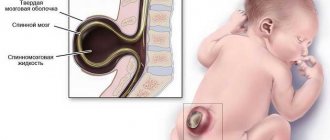Alcoholic personality degradation is a mental disorder of a person that develops against the background of regular consumption of alcoholic beverages. Literally translated, “degradatio” means “decline” or “reverse development.” Alcoholism is a disease that leads to a sharp change in a person’s character, tastes and interests, as well as a decrease in the performance of internal organs, especially the brain. He is no longer interested in being with his family, spending time at work or with friends, as a loss of life values and a hardening of the patient’s personality begins to appear. Now the main goal of such people is to satisfy their primary need to consume alcohol.
Signs of development of male alcohol degradation
Personality degradation due to alcoholism in people with a low level of intelligence occurs much faster than in more developed and advanced citizens, in whom this disease may not manifest itself at all until the last stage of progression. For example, the famous actor, singer, director and bard Vladimir Vysotsky suffered for many years from an unshakable addiction to alcohol and at the same time continued to pursue a career. Only in recent years did constant heavy drinking become a habitual way of life for him, which led to sharp degradation and death.
The emergence and development of alcohol dependence is accompanied by the manifestation of certain signs in a person, expressed:
- loss of interest in previous hobbies;
- social indifference, when a person loses the desire to maintain communication with people who don’t drink;
- a drop in the level of importance in observing ethics and moral standards of behavior;
- reduction in the ability to think in critical situations to a minimum;
- development of egocentrism.
The progression of the degradation of alcoholics contributes to a change in their character, which manifests itself:
- commercialism;
- deceitfulness;
- tactlessness;
- boastfulness;
- constant excuses for your drinking bouts, accompanied by “fairy tales” about problems in your personal life or at work;
- familiarity;
- sloppiness;
- annoying.
Dependent people experience decreased productivity in thinking processes and memory impairment. They often forget about what happened during the feast, where and with whom they drank, why they were rowdy, but they can remember what happened before the feast began.
Signs by which you can easily identify a sloppy woman
Each woman is beautiful and attractive in her own way, because there is no comrade according to taste and color. Therefore, female beauty can only be assessed subjectively. Still, there are women whose beauty is killed by sloppiness. In order not to bring yourself to such a state, it is important to remember the signs by which you can recognize such a woman.
Thus, fashion experts have indicated seven signs that clearly mark a woman as a slob.
The first sign is insufficient hygiene
This sign can be considered the most important, since it reveals sloppiness of any gender and age. Signs such as greasy hair, sweat stains on clothes, and, moreover, an unpleasant odor immediately reveal a sloppy person. And it’s unlikely that anyone will like communicating with such a woman.
The second sign is chapped lips.
Despite the fact that this symptom does not always depend on the woman herself, since it may be a consequence of an allergy, if you use a special scrub for your lips and moisturize them, then this problem can be avoided.
The third sign is body hair
Recently, you can often hear that many girls are fighting for natural beauty, so they refuse to remove hair on their legs, bikini area and armpits. This is especially true for feminists. But, in fact, seeing regrown hair on some parts of the body is completely unpleasant. Moreover, many people find this appearance disgusting.
The fourth sign is sticky eyelashes
When choosing mascara for yourself, you should be very careful, because mascara cannot always emphasize the beauty of the eyes, and in some cases, it can ruin the image and make a woman look like a slob. We are talking about low-quality mascara, which, instead of increasing the volume and length of eyelashes, simply sticks them together. These eyelashes look very terrible.
The fifth sign is pilling on clothes
Of course, every woman has some favorite wardrobe item that is very difficult to say goodbye to, even if it is already worn out. Still, wearing such clothes speaks of a woman’s sloppiness. Therefore, there are two options: either throw away this item, or remove the pellets using a razor or a special machine for removing pellets from clothes.
The sixth sign is worn clothes
As in the previous case, even the most carefully sewn holes in clothes always catch the eye. That is why there is no point in trying to revive clothes.
The seventh sign is unkempt nails
What can we talk about if a woman doesn’t have well-groomed nails? And the point is not at all in an expensive manicure or gel polish coating, but in simply clean and evenly trimmed nails. To achieve this, you just need to use a cuticle cleaner and a nail file.
Symptomatic manifestations of female alcoholism
A physiological feature of the female body is that ethanol is absorbed into the blood much faster than in men. Therefore, the development of alcohol degradation occurs 3–4 years later, in rare cases 6 years, after regular drinking. This disease manifests itself with the following symptoms:
- loss of self-esteem;
- cheeky behavior;
- aggressive language;
- sloppiness;
- lack of will;
- tearfulness;
- indifferent attitude towards relatives;
- increased anger;
- sophisticated features of cunning;
- vindictiveness.
Regular consumption of alcohol causes disruption at the hormonal level, as a result of which a woman becomes outwardly similar to a man. Facial hair begins to grow, the voice deepens, gait, behavior and figure change.
Features of the disease, its symptoms and causes
The disease was first considered as a separate psychopathological syndrome back in 1966. The name “Diogenes syndrome” was proposed by British scientists in 1975. Today, there is constant debate about the correctness of this particular name for the disease; many psychiatrists consider the most appropriate terms to use are “syllogomania” or “senile squalor syndrome.” The fact is that the fundamental symptom of this mental disorder is the pathological accumulation of unnecessary things.
The ancient Greek philosopher, after whom the disease got its name, did not suffer from collecting unusable objects. He lived in poverty and the only object of his possession was a cup, which, in the end, the thinker broke due to the philosophical ideas of asceticism.
In domestic psychiatry, another name for this psychopathology is widely used - “Plyushkin syndrome”. As you know, this character in Gogol’s great poem was famous for his stinginess and craving for the accumulation of unnecessary things, with which he completely filled his home.
Among the main symptoms of the disease are:
- pathological hoarding;
- aggressiveness and negativism towards people who criticize the patient;
- lack of self-criticism of one’s condition;
- failure to comply with hygiene rules, sloppiness;
- stinginess;
- isolation from the public;
- apathy, indifference;
- lack of shame;
- self-neglect.
Collecting unusable things sometimes clutters up the home of pathological hoarders so much that it literally turns into a garbage dump. Hoarders take away various unnecessary items that, in their opinion, may come in handy sooner or later. The hoarder’s place of residence is sometimes so cluttered with all sorts of rubbish that it even becomes difficult to move around the house. People suffering from this syndrome drag everything from the street: from old, broken furniture to empty cardboard boxes, some even managed to store rotten vegetables and fruits. All this rubbish gives off an unpleasant odor, and cockroaches and rats often infest the room. The greatest discomfort is experienced by family members and neighbors living next to the pathological storage device.
As a rule, any criticism addressed to the patient is not accepted, and any offered help is immediately rejected. Pathological "Diogenes" after several complaints about their lifestyle become suspicious, taciturn and secretive. Sometimes it is simply impossible to establish contact with them; relatives have to resort to forcibly hospitalizing the patient (in extremely serious conditions).
Patients do not realize the seriousness of their condition; to many complaints they respond that this is their lifestyle, a hobby. According to the hoarder, any thing can be used: “old boards can be used to build a shed,” and “you can store something in empty tea boxes.” Guided by this principle, a person turns his life into an obsessive search for unusable objects.
The appearance of such people is unkempt; they often do not care about how they look. Neglect of hygiene makes them look like homeless tramps. When it comes to nutrition, syllogomanias are also not picky; as a rule, they save on food. There are many cases where patients ate scraps from landfills simply because they did not want to spend extra money on food. Basic necessities and medicines, according to pathological hoarders, are also not very important. Many patients do not leave the house for months, considering communication with people useless and boring. Neglect of one's health and social isolation sometimes lead to dire consequences. According to the facts, some recluses die completely alone, surrounded by garbage barricades.
Another sign of the disorder is a lack of shame. Syllogomaniacs may publicly relieve themselves, change clothes, or even undress. They are driven by indifference to what others think; their actions follow the principle of “I want and I do.” Often patients end up in the police department because of their shameless behavior and violation of the norms of order.
An interesting fact is that often people suffering from syllogomania are the owners of large savings, although they live like beggars. There are many cases where former rich and influential individuals became vagabonds, coming home only to bring more rubbish. Thus, one American millionaire was so stingy that at the age of forty he simply decided to live in a landfill in order to spend less.
Among the causes of the disease are:
- organic lesions of the frontal lobes of the brain;
- mental disorders of old age;
- alcoholism;
- pathological tendency to collect.
According to psychophysiological studies, the disease can occur as a result of damage to the frontal lobes of the brain. The cause of such lesions may be injuries, brain diseases, or unsuccessful operations. These areas of the cortex are responsible for making decisions, and it is their damage that leads to the development of a pathological craving for accumulation.
Sometimes syllogomania is only part of a serious mental illness. The syndrome most often occurs in obsessive-compulsive disorder, senile dementia, and Pick's disease.
Reasons for the development of alcohol degradation
In men, signs of progressive dependence on alcohol begin to appear approximately 8 years after regular use. And after 2-3 years it becomes impossible to hide them from others. Women degrade much faster.
Alcohol products negatively affect almost all internal organs and systems of a person, but the liver and brain suffer the most. Ethanol has a destructive effect at the cellular level.
If any harmful compounds enter the body of a healthy person, they are neutralized in the liver. After this, the kidneys remove toxins out. With the regular intake of ethanol into the liver, the membranes of the cellular structures of which it consists are destroyed. As a result, the level of functioning of the organ decreases. Alcohol compounds begin to accumulate not only in the liver, but also end up in the bloodstream.
When alcohol enters the bloodstream, the fatty membranes of red blood cells are destroyed, which leads to the formation of clots, changes in the structure of blood vessels, and destruction of the cerebral cortex, which consists of 15 billion nerve cells. Neurons are nourished by their own microcapillaries. They are very thin vessels, so the flow of red blood cells through them is possible provided they pass in one row. When blood clotting increases, it does not pass through the microcapillary and becomes clogged in it. As a result:
- nerve cells die;
- the brain is filled with blood;
- rupture of the vessels of the membranes and convolutions of the brain occurs;
- hypoxia (oxygen starvation of the brain) begins to develop.
During this period of time, the drinker is in a state of euphoria and does not even suspect that the alcohol he drinks is slowly killing his brain, against the background of which alcoholic personality degradation develops.
Subsequent excessive consumption of alcohol leads to pathological disruption of the functioning of the entire nervous system, including the medulla oblongata and spinal cord. As a result, a person may fall into someone's life or die early.
Types of alcohol degradation
There are 4 types of this pathology:
- astheno-neurosis-like type of degradation - characterized by the development of asthenia, severe irritability, insomnia, suspiciousness, sudden changes in mood, loss of strength. The functioning of the entire cardiovascular system of organs is disrupted, memory deteriorates, pain occurs in various areas of the body, and sexual functionality decreases. Patients have a strong desire to be cured. If you follow all the doctor’s recommendations and maintain a sober lifestyle, the disease gradually recedes;
- alcoholic type of degradation - characterized by the appearance in a person’s character of such qualities as cynicism, lack of willpower, duplicity, irresponsible attitude towards other people and one’s health, hypocrisy, lack of modesty, loss of all interests, cheeky behavior. Such people are fully aware of their behavior, but they lack the willpower to do anything to change it;
- alcohol-organic type of degradation - develops in people suffering from residual effects after a head injury, alcoholic encephalopathy, or from atherosclerosis and other pathologies of the brain and blood vessels. Characteristic signs are an increased level of sentimentality, memory loss, dullness, complete lack of will, and loss of human dignity. Often patients lose the boundaries between reality and the world of fantasy, boasting about extraordinary feats, meetings with famous personalities, etc.;
- psychopathic type of degradation - is more characteristic of young boys and girls suffering from feelings of inferiority. It develops most often due to tragic events that have occurred in their lives or against the background of inappropriate attitudes of parents and peers, as well as from the negative influence of bad company. The initial use of alcohol helps them become more confident, and over time it becomes the only sedative. As a result, the person goes on long drinking bouts and finally becomes an alcoholic. Such people usually suffer from signs of neurasthenia, run away from home, become hysterical, throw various things, and bang their heads against the wall. When sober, they constantly walk around in a gloomy mood, but when drunk, they become arrogant, picky, and can even commit a crime. They prefer to drink alcohol alone, which is why they constantly hide alcohol in various places in their home.
Alcoholism is considered one of the most common diseases, which not only can, but also needs to be treated.
From the first glass I saw. Stages of alcoholic personality degradation.
Signs of personality degradation
To be able to react in time and help your loved one, it is necessary to promptly notice any behavioral deviations.
Social degradation of the individual is revealed both in the external appearance of the human subject and in changes in his internal state. A degrading subject pays less attention to spoken words, his own appearance, neatness and neatness. His speech becomes more simplified, and his circle of contacts becomes limited. Patients avoid people who bring unnecessary trouble into their existence. The defining motto of a declining personality becomes the phrase “I want.” Detachment from relatives, family and other concerns gradually develops.
A person who has chosen the path of degradation does not want to think or care about others. He seems to fade and plunge into himself, moving away from his loved ones. Long before the complete destruction of personality, the first harbingers of approaching degradation appear. The range of hobbies narrows, mainly in general cultural terms: they do not attend concerts and theater performances, they stop reading and watching TV shows. They become characterized by frivolity, flat humor, frivolity, carelessness at the same time as capriciousness, inconstancy, dissatisfaction and grumbling. A declining individual turns into a familiar, annoying subject, whose judgments are characterized by superficiality and frivolity, and whose behavior is characterized by swagger, cynicism, a decrease in disgust and a sense of shame. Traits such as egocentrism, selfishness and deceit progress.
As symptoms escalate, intellectual impairment becomes more pronounced. The character of such a person is transformed. A declining individual becomes hot-tempered and irritable. A negative worldview, a prejudiced attitude towards everything that happens, anxiety and internal fear become the dominant features. In addition, the individual experiences a decrease in memory, narrowing of interests, and impoverishment of judgment. The ability to concentrate deteriorates sharply.
Signs of personality degradation are lack of will, carelessness and excessive complacency. The destruction of personality can be noticed with the naked eye by a sloppy appearance, stooped appearance, an indifferent look, and inappropriate behavior.
The famous psychologist A. Maslow argued that social degradation of personality is characterized by the following stages of progression:
- education of the psychology of the “pawn” - the phenomenon of “learned helplessness” (a person feels completely dependent on circumstances or other forces);
- the emergence of a lack of basic goods, when initial needs become dominant (food, survival, sexual satisfaction);
- the formation of a “pure” surrounding society (society is divided into good individuals and bad, “insiders” and “outsiders”), the social world for them becomes like black and white;
- the emergence of increased self-criticism - the so-called cult of “self-criticism” (the subject admits himself guilty even of actions that he did not commit);
- impoverishment of vocabulary (the subject uses elementary phrases in his own speech, it is difficult for him to describe something, the selection of adjectives is especially difficult, since they express human feelings and emotions);
- defense of “sacred bases” (the individual absolutely does not want to think about the fundamental prerequisites of the worldview, he has no doubts about his own “sublime foundations”, such a person is unable to look at them skeptically, that is, the person considers his own opinion to be the only correct one);
- emergence of various dependencies.
Below are twelve life aspects that neutralize the threat of personality degradation:
- reading, because it is the book that contains the age-old wisdom of people, which trains the “gray matter” and does not allow the brain to dry out;
- taking care of your appearance even in the most difficult periods of life;
- combating bad habits (excessive consumption of alcoholic beverages, excessive incontinence in food, smoking marijuana - activities unworthy of a well-mannered, developed personality;
— faith in the best (saddened pessimists are the first candidates for degeneration);
- a feeling of love (you need to love your parents and other relatives, pets, partner, life), a loving person will never give up;
- stop worrying about trifles, you don’t need to suffer just because the world is unfair and people are unhappy, if the problem can be solved, then it doesn’t exist, and if there is no solution, then worry and anxiety still won’t help get rid of it;
- self-development (learning new things, watching educational videos, attending various trainings, reading, getting a second education - all this will not allow a person to give up);
— belief in inevitable retribution for bad deeds committed (most criminals commit offenses because of the conviction of their own exclusivity and, accordingly, impunity, both before a posthumous court and before the current legislation);
- following moral standards (lying, stealing, envy, gossiping, committing meanness and nasty things - destroys the personality);
- you should not abuse obscene language, since obscenities and obscene words destroy the soul;
- following the rules of decency (public scratching of the genitals, public picking of the nose, slurping, licking fingers or plates are considered signs of personal degradation);
— while the human subject is alive, you should not give up, because only after death nothing can be changed, so you need to fight under any, even the most insurmountable circumstances.
Therapy methods
The main treatment for alcoholic degradation of a person’s personality is to completely eliminate the consumption of alcohol, as well as to provide qualified assistance from a psychologist. Families with at least one alcohol-dependent relative are advised to pay more attention to him throughout the course of therapy. We need to help him take his mind off thoughts about drinking, come up with some new common hobby that can not only interest him, but also occupy all his free time. Without the support of relatives, an alcohol-dependent person will not be able to overcome his illness and take the right path in life.











